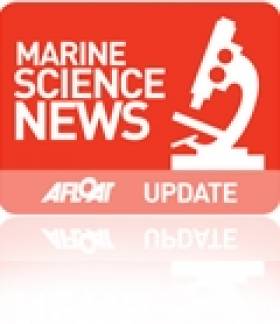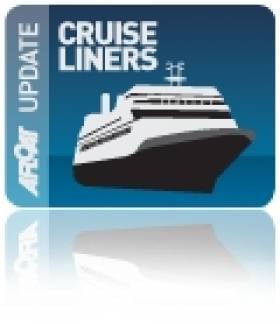Displaying items by tag: Monaco Yacht Show
New Superyacht Brand 'Ares Yachts' Launched at 2023 Monaco Yacht Show
Based in Antalya, Turkey, Ares Shipyard has unveiled its new superyacht brand 'Ares Yachts' at this week's 2023 Monaco Yacht Show.
Originally founded in 2006 by the Kalafatoğlu family, which is bolstered by a long tradition of shipbuilding and sailing, Ares Shipyard has built a reputation for its naval, utility and support vessels – having delivered over 230 vessels to more than 15 countries to date – and is now looking to expand further into the luxury yachting arena.
With the official announcement of the brand taking place in Monaco, Ares Shipyard has, in fact, quietly been working on yachting projects for some time.
Projects include the 61.61-metre steel hulled cruising ketch Simena (pictured above) that is currently in build. The project is penned by Taka Yacht Design and Design Unlimited.
She features a carbon-epoxy superstructure, all-aluminium masts and rigging design by Chris Mitchell. With her power provided by hybrid propulsion, Simena has a top speed of 15 knots and a cruising speed of 11 knots, with the vessel’s delivery scheduled for December 2024.
 Ares Shipyard also has the 50-metre motor yacht Spitfire under construction. The 499 GT vessel has been designed in collaboration with Lateral Naval Architects and Bannenberg & Rowell Design. It has hybrid propulsion, enabling the motor yacht to reach a top speed of 23 knots
Ares Shipyard also has the 50-metre motor yacht Spitfire under construction. The 499 GT vessel has been designed in collaboration with Lateral Naval Architects and Bannenberg & Rowell Design. It has hybrid propulsion, enabling the motor yacht to reach a top speed of 23 knots
Known as one of the largest steel, aluminium and composite boat builders in Southeast Europe in terms of its facilities, Ares Shipyard boasts an enclosed, expansive, air-conditioned production area spanning 40,000 square metres and a workforce of over 450 individuals. Primed and ready for custom yacht building.
€25m Underwater Superyacht 'Nautilus' Unveiled at Monaco Yacht Show
At the 2022 Monaco Yacht Show, the Dutch builder U-Boat Worx will review designs for the 1,250-ton, 37.5-meter Yacht Submarine, the Nautilus. Once it is built, the vessel will be equally at ease functioning as a yacht or a submersible.
Since Jules Verne’s 20,000 Leagues Under the Sea came out in 1870, people have been dreaming of a luxury yacht with dive capabilities. Since then, inventors produced a lot of impressive concepts. Unfortunately, not one of these designs has ever been realised.
Being the world leader in the market for small submersibles, U-Boat Worx has now finally succeeded in engineering a realistic combination of luxury and safety in a fully certified private submersible.
The diesel-electric Nautilus has a depth rating of 200 meters, with a surface cruise speed of 9 knots and an underwater speed of 4 knots. Once ordered, an owner can expect to have their Nautilus delivered within 30 months.
When functioning as a boat, the Nautilus offers a massive sundeck equipped with a freshwater pool, a bar, and a luxurious dining table. This al fresco arrangement is retracted before the submersible slips below sea level.
A newly invented, completely pressure-resistant electrical tender is stowed under the Nautilus’s aft deck and will stay outside while diving. This tender, the Aronnax, may also be used for transporting five scuba divers underwater to the intended dive spot.
 The diesel-electric Nautilus has a depth rating of 200 meters - the cruising speed is 9 knots. Onboard facilities include a bar, a pool, lounge and dining room, four luxury guest cabins, a spacious master bedroom, and a galley. There are ten four-metre wide windows offer an exceptional view of the underwater world
The diesel-electric Nautilus has a depth rating of 200 meters - the cruising speed is 9 knots. Onboard facilities include a bar, a pool, lounge and dining room, four luxury guest cabins, a spacious master bedroom, and a galley. There are ten four-metre wide windows offer an exceptional view of the underwater world
The Nautilus interior features a 50 sq. m dinner and lounge area with four circular windows. Each with diameters close to 4 meters. The proposed design for the submarine has a master bedroom and four staterooms, as well as sleeping quarters for up to six crew. A fully equipped galley makes cooking an underwater meal simple and fun. However, interior layouts are fully customisable by the client.
Nautilus Fact File
- Nautilus is a 1,250-ton, 37.5-meter vessel
- It can function as a yacht or a submersible
- The diesel-electric Nautilus has a depth rating of 200 meters
- The cruising speed is 9 knots
- Onboard facilities include a bar, a pool, lounge and dining room, four luxury guest cabins, a spacious master bedroom, and a galley
- Ten 4-meter-wide windows offer an exceptional view of the underwater world
- The Nautilus has a starting price of € 25 million
The superyacht submarine will be able to stay underwater for up to four days. At cruise speed, the underwater endurance is six hours.
When not in use, the Nautilus can be docked at any quay that can accommodate its 6.5-meter draft.
The Nautilus has a starting price of € 25 million.
“People that have decided to buy a yacht will now have to consider if their vessel of choice can also dive down to 200 meters,” says U-Boat Worx Chairman and Founder Bert Houtman. As an added bonus, the Nautilus easily combats seasickness. “If the sea becomes too rough,” says Houtman, “You simply dive and continue your voyage in comfort. With the Nautilus, the yachting market will never be the same again.”
Monaco Yacht Show Celebrates 25th Anniversary
#MonacoYachtShow – This is a special year for the Monaco Yacht Show as the prestigious event celebrates its 25th anniversary. The 2015 show, likewise of the previous quarter century is host to the world’s most exclusive gathering of extraordinary large superyachts, writes Jehan Ashmore.
The principality on the Côte d'Azur is the place to be seen and according to the show’s marketing is where the ‘House of Fine Yachting’ is on full display. Motoryachts lengths range from a modest 30m and up to the superyachts league of 80m. In addition to sailing yachts that are impressive with exhibitors of up to 56m. The four-day show that began mid-week concludes tomorrow, Saturday 26 September.
Around 500 exhibitors are nestled in Monte Carlo’s harbour of the Port Hercules, where world leading luxury yachting companies, among them the trendiest superyacht builders, yacht designers, luxury manufacturers are gathered. In addition the most important brokerage houses. All this against the backdrop of the azur seas of the Mediterranean.
The show has the privilege of benefiting from the recognition and the support of Prince Albert II of Monaco. Earlier this year, Afloat.ie reported a reception held in the Yacht Club de Monaco (YCM), where Prince Albert marked the occasion of the twinning of YCM and the Royal Cork Yacht Club.
Last year, the motoryacht, M.Y. Katrion of almost 40m visited several Irish ports. Among them Cork City Marina which accommodated the impressive 10-guest, Feadship built vessel.
After her summer visit, the 401 tonnes Katrion returned to sunnier climes as she made an appearance as an exhibitor at last year’s Monaco Yacht Show.
Prince Albert II of Monaco to Visit Marine Institute
Prince Albert's visit to the Marine Institute headquarters in Oranmore will be held on the final day of the visit on 6 April. Prior to that the prince will hold meetings with An Taoiseach, Enda Kenny, minister for the marine, Simon Coveney, minister for the environment, Phil Hogan and Dublin's Lord Mayor, Gerry Breen.
The Head of Monaco will open an exhibition in honour of his late mother at Farmleigh House and the prince will host a reception to highlight Irish literature and art. In addition to honouring the royal visit a state dinner will be held by President Mary McAleese.
The world's second smallest state is home to the Musée Océanographique de Monaco which has an impressive collection of aquariums. Though the principality is more synonymous with the hosting of Formula 1 Grand Prix. The event is at the end of May and is expected to attract a higher than usual number of cruiseships totalling 12 cruise-calls.
Mostly they will be on charter and accompanied by mega-yachts which are to dock at the outer pier or anchor offshore and along the French Riviera at Villefranche, Nice and Cannes. At the far side of summer Monte Carlo's Port Hercule is also to host the Monaco Yacht Show in September.
- Newport
- Marine Institute
- Co. Galway
- Monaco Yacht Show
- Cruiseships
- Ports and Shipping News
- Oranmore
- Galway Bay News
- Cruisecalls
- Prince Albert II
- Prince Albert of Monaco
- Prince Rainier III
- Princess Grace
- Grace Kelly
- Hollywood
- Port Hercule
- Principality
- Co.Mayo
- Charle Wittstock
- Formula 1
- Grand Prix
- Megayachts
- Musée Océanographique
Irish Sea to Get More Super Yachts
The Irish Sea and possibly the Irish East Coast may see more super yacht traffic thanks to an Isle of Man Government initiative aimed at registering more Super yachts on the island after the Monaco Yacht Show later this month. Four government representatives are travelling to the famous tax haven in the hope of attracting more business.
The island's super-yacht industry has grown by 20% in the past year and there are currently 95 commercial yachts registered with the Manx flag.
The Isle of Man government is confident business will increase as a result of having a presence in Monaco.
Director of the Isle of Man Ship Registry Dick Welsh told the BBC: "It is difficult to quantify how much the industry is worth to the Isle of Man.
"The registration charge is £700 but then there is the technical management, crew management, chartering and insurance.
"It's a thriving industry which employs around 100 people on the Island."
More from the BBC HERE.































































